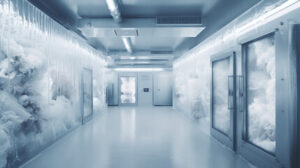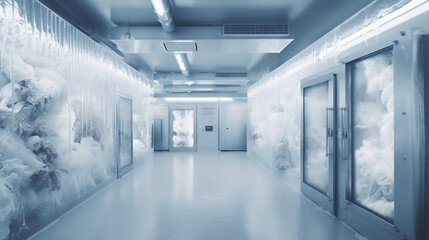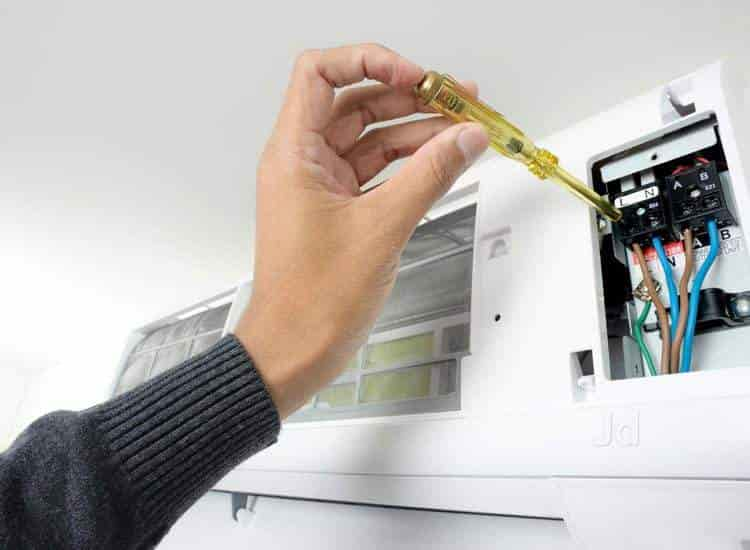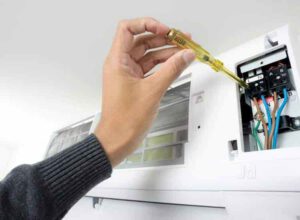Commercial refrigeration is used to store food drinks, and even flowers. You can also find it in hospitals and medical research clinics to keep delicate materials appropriately refrigerated.
You will notice that commercial refrigerators are bigger and more spacious than residential models. They are also designed to be deep-cleaned regularly. Call All Temp Air Conditioning & Refrigeration team to hire experts.
 Refrigerators
Refrigerators
Commercial refrigerators are designed to keep foods at 40 degrees Fahrenheit or lower, and they’re used in a variety of settings. They can withstand rapid temperature changes and work tirelessly to restore food-safe temperatures. They also can hold more food than residential fridges because they are larger and use more powerful compressors.
Refrigerators can be freestanding or built into a kitchen, and they come in a variety of sizes and styles. They may use a compressor (which makes a noticeable noise), an absorption chiller, or even a Peltier cooler, which is quieter than compressor units but does not produce ice. They can be air- or water-cooled, and they’re available in multiple widths and depths.
Freestanding refrigeration is great for businesses that need to move units frequently or replace them quickly, and it’s often less expensive than built-in models. Freestanding fridges are usually made of stainless steel but they can be crafted from a wide range of materials to suit the aesthetic of a restaurant, bar, or office breakroom.
Built-in refrigeration is installed into the cabinetry of a restaurant, bar, or other space, and it can be made from a wide variety of materials, including wood, plastic, and stainless steel. The cabinets can be finished to match other cabinetry, and they can feature glass doors for easy visibility. Built-in refrigerators can be a bit more expensive than freestanding models, and they often require more installation and maintenance.
Another type of commercial refrigerator is a back bar cooler, which is similar to an under-counter refrigerator but is designed to hold bottles and cans rather than food items. These fridges are typically 24 inches wide and can be configured with one, two, or three sections. Generally, three-section reach-ins offer the most storage space, while one-section units provide the least.
Refrigerators are often a focal point of the restaurant experience, so they should be attractive and complement the overall look of your space. They should also be durable and long-lasting since they can withstand frequent handling by customers and employees. They must also be able to quickly cool down after being accessed since food is at risk of spoiling if it’s not refrigerated promptly. Newer units are often star-qualified and use less power than older freezers, thanks to improved compressors and insulation.
Freezers
Commercial freezers are vital to any refrigeration system. They are designed to freeze vast amounts of temperature-sensitive goods, including meats and produce, while minimizing energy consumption and maintenance costs. These appliances are ideal for businesses that require a lot of cold storage space, such as restaurants or convenience stores. They can also help lower operating costs by reducing energy consumption and carbon pollution. Government standards have helped increase efficiency in these products, saving companies up to $11.7 billion in energy costs per year.
When choosing a commercial refrigerator, consider its size, configuration, and features and functions. For example, look for a model with easy-to-access temperature controls and adjustable shelving. In addition, ensure that it is located in a cool, dry location. Avoid placing it near a water heater or stove, as this will make it difficult to maintain the proper temperature. Also, leave a little space between the fridge and walls to allow for air circulation.
Refrigerators and freezers are available in a variety of sizes and configurations to accommodate different inventory. For example, a top freezer keeps frozen items at the top or bottom of the appliance and has basic shelving and door bins. Side-by-side refrigerator-freezers offer more space for frozen foods and come with double doors.
During the cooling cycle, the compressor draws refrigerant vapor in and raises its temperature and pressure. Then, it pushes this high-pressure substance through the condenser coils, where it is chemically altered into a liquid. The liquid then travels through the capillary tube and evaporator, where it expands and expels heat to chill the compartment.
Commercial refrigeration is an essential part of any restaurant, cafeteria, or bar. By storing food and drinks at the right temperature, you can ensure that they have optimum color, flavor, and nutritional value. However, this equipment requires regular maintenance to keep its performance at a high level. To do this, you must regularly check temperatures and clean coils. Keeping these appliances in good condition will reduce energy consumption, save money, and prolong their lifespan.
Deli Cases
Deli cases are used to display fresh deli products in restaurants, diners, and other commercial food service establishments. They offer a high-profile, eye-catching way to showcase sandwiches and other food items that are designed to promote impulse sales. There are several different types of deli cases available, and they vary by glass style, how they’re accessed, and the number of doors and levels that they have. They also come with a wide range of specialty options, including dual-temperature zones, glass sides, and slanted shelves.
One of the most popular types of deli cases is a refrigerated display. These cases are often used for sliced meats, cheeses, salads, and prepared foods. They can be used to promote impulse sales and keep these foods at safe temperatures throughout the day. Refrigerated deli displays can be either forced-air or self-service, and they can include multiple shelves for merchandising products and a refrigerator for storing prepackaged drinks and other foods.
A refrigerated deli case has double-duty glass doors on the back end, which can be easily opened to access the meats and other food stored inside. The case has another set of doors underneath for refrigerated storage, which can be used to hold additional items such as cheeses and vegetables. These cases have special gravity coils to help regulate temperature and humidity.
If you’re looking for a refrigerated display case, consider the curved glass refrigerated deli case. This stainless-steel case has a timeless design that will fit in perfectly in your restaurant or deli. Its energy-efficient design uses R290 refrigerant and can be used with either a self-serve or full-service option. The case features slanted shelving for increased product visibility, and its durable construction ensures that it will last for years to come.
Another consideration when shopping for a refrigerated display case is the lighting. Many of these units use overhead-mounted lighting, which can highlight the color of food and make it look more appealing. Some of these cases also have lights that are designed to flatter specific foods, such as red meat or baked goods.
Drop-in Coolers
Commercial refrigerators are often much larger than their residential counterparts, making them perfect for storing large amounts of food. However, they can also be quite heavy. They use a lot of power to run and require regular maintenance to keep them operating at maximum efficiency.
Refrigeration is a crucial part of many businesses, including hospitals and florists. Hospitals use refrigeration to store sensitive medical equipment, while florists need it to keep their fresh-cut flowers at safe temperatures. Commercial refrigerators are also commonly used in outdoor kitchens to serve cold drinks and snacks for customers.
Regardless of their purpose, all commercial refrigerators need to be maintained regularly to keep them running properly. A faulty fridge can lead to food contamination, which can cost you big in lost sales and fines from health codes. This is why it’s important to keep an eye out for problems like mold, dirt, or a foul smell.
Dirty or moldy coolers can be a serious problem for your business, and should always be fixed immediately. Likewise, a dirty air condenser cable will force your refrigerator to work harder and increase its energy bills. To prevent this, your staff should wipe down the coils of your refrigerator at least once a week.
You may also want to consider buying an energy-efficient refrigerator, which will save you money on your electricity bill in the long run. These refrigerators are designed to conserve energy and meet strict government standards.
A commercial refrigerator can be a big investment, but it will pay off for your business in the long run. You can get up to 15 years out of a typical walk-in refrigerator by keeping it clean and following proper maintenance. Just like an HVAC system, a walk-in refrigerator loses refrigerant over time, which is why you need to monitor and replenish it as needed. By ensuring your walk-in refrigerator has the correct refrigerant level, you can avoid unnecessary repairs and extend its lifespan.



